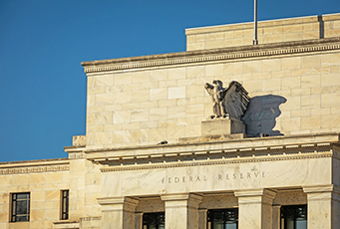Inflation is measured by the cost of a basket of goods and services over time. You may be surprised to learn that while prices are increasing at the fastest pace since the 1980s, the US dollar has simultaneously been increasing in value and is the strongest that it has been since 2002.
The dollar has increased in value by 11.5%, even as inflation has risen from 7% to over 9% (a 29% increase). How can these seemingly contradictory things both be true? And, what impact can the dollar's strength have on Americans' lives?
The Dollar Index
The US Dollar Index is a measurement of the value of the US dollar relative to a basket of six other foreign currencies. The currencies in this index are those in which the United States conducts most of its international trade: the euro, Japanese yen, British pound, Canadian dollar, Swedish krona, and Swiss franc. It is also interesting to note that the dollar has recently exhibited strength against other major currencies that are not in the index. This includes currencies like the Chinese Renminbi, South Korean won, and the Australian dollar.
When the dollar index rises, as it has recently, it signals that the US dollar is increasing in value relative to this basket of other currencies and is generally considered to indicate the strength of the US economy, particularly for imports.
When the dollar is strong relative to other currencies, the cost of importing goods from foreign countries decreases for the American consumer. This can help put downward pressure on inflation since prices are lower. Furthermore, when the dollar is strong, if Americans travel abroad, their dollar will go further and get them more for their money during international trips.
Conversely, a weaker dollar means that while imports are more expensive, it can make it easier for domestic exporters to sell their goods overseas, potentially boosting Gross Domestic Product (GDP). However, since most of what the US consumer purchases comes from overseas, a weak dollar can lead to financial hardship.
Strong Dollar Despite High Inflation. How?
Historically, there has been an inverse relationship between inflation and the dollar's strength. That is, when inflation is high, the dollar weakens.
For example, between August 1972 and April 1980, a period of sustained high inflation, the CPI jumped from 3% to over 14% (an increase of over 400%), while the dollar index fell by nearly 20% during that same time. Subsequently, over the following five years, as inflation drifted down towards 3%, the US dollar index skyrocketed an astounding 75%.
Currently, even though prices within the US are rising at the fastest pace in a generation, the US dollar has increased in value to a multi-decade high. This anomaly largely concerns the perception of the US dollar as the world's global reserve currency.
The US dollar is used in approximately 90% of foreign transactions worldwide. This means that during periods of global economic distress (like we are currently experiencing), the dollar generally rises because investors consider it a relatively safe haven.
Furthermore, even though inflation is high domestically, the US is not alone in facing this problem. Countries all over the world are experiencing high levels of inflation. A difference, though, is that the central bank of the United States (the Federal Reserve Bank) is moving more aggressively to tame inflation than its global counterparts. This has led to higher interest rates in the US, making it an attractive place for capital. So even though prices are rising here, the dollar is increasing in value relative to other currencies.
Summary
Overall inflation has had a widespread impact on the purchasing power of US citizens in their everyday life. Predictions over the past several months that inflation had peaked have proven to be just as inaccurate as the "inflation is transitory" narrative from 2021.
However, even though the inflation rate is at its highest since November 1981, the US consumer has benefited from a "flight to safety" that has strengthened the dollar's value. This has helped keep the costs of imports lower, shielding them from potentially even higher prices.
Moreover, for businesses, multinational corporations that derive a meaningful amount of revenue overseas have suffered from the US dollar's bull market run. In contrast, domestic and export companies have benefited from the rise.
While a strengthening dollar has provided relief for US consumers against inflation, if the dollar were to fall against other currencies, this benefit would dissipate and expose Americans to further inflation from increasing import costs. For now, however, the strong dollar has helped to dampen the worst of the past year's inflationary pressures.
Schedule a Consultation
We have helped our clients answer these questions and more. If you want a clear understanding of your financial future, and need help making changes to reach your goals, schedule a consultation and we can get started.
Prior to implementing any investment strategy referenced in this article, either directly or indirectly, please discuss with your investment advisor to determine its applicability. Any corresponding discussion with a Bedel Financial Consulting, Inc. associate pertaining to this article does not serve as personalized investment advice and should not be considered as such.
Recommended Articles
Private Equity and M&A in a Low-Rate World
Deal flow is the stream of business proposals, investment...
The Bonds that Tie – An Exciting Look at Fixed Income
With today’s yields being much higher than the close to...





